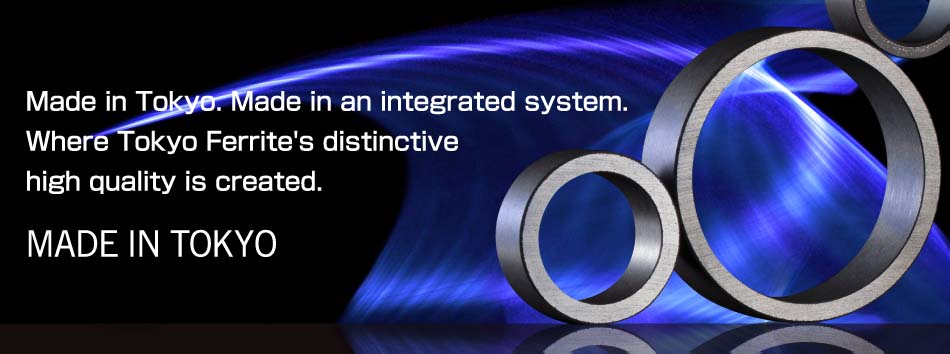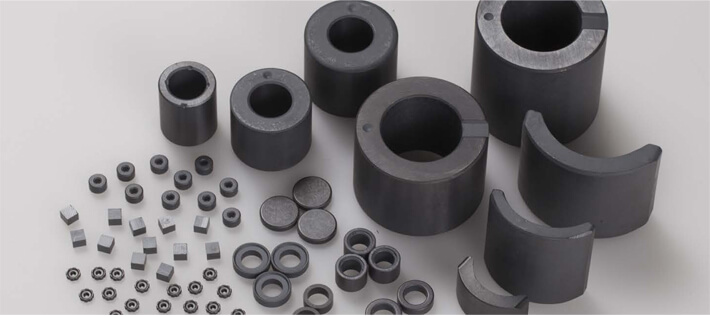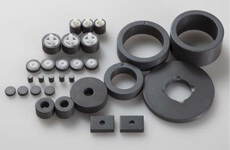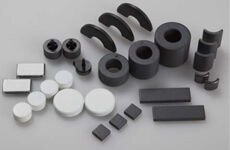
Sintered Magnet
Sintered magnets are high cost-performance magnets made mostly from ferric oxide (Fe2O3), barium carbonate (BaCO3) and strontium carbonate (SrCO3), and produced by powder metallurgy. Magnets can be classified according to their properties as shown in the magnetic property table. Isotropic magnets are press formed in the absence of a magnetic field, while anisotropic (dry and wet pressing) magnets are press formed in a magnetic field to provide direction.
The high coercivity of sintered magnets, which is their main feature, makes them insusceptible to external magnetic fields and self-demagnetization action, and enables them to be shaped in flat and other complex shapes. We also provide polar anisotropic and radial magnets as needed.

Features of Sintered Magnets
- High cost-performance ratio, with a stable supply available at low cost
- Stable magnetic force obtained through its high coercivity and insusceptibility to demagnetization
- Multi-pole magnetization is possible, from 2 - 10 poles or more on the plane surface and in the inner and outer circumference as well
Note on Sintered Magnet Physical Properties
The temperature coefficient of the magnetic flux density is relatively large at -0.18 - -0.19%/ºC. Also, coercivity decreases at a ratio of +0.35 - +0.5%/ºC when the temperature falls for anisotropic materials. In the design, the operating point of the magnet will have to be set above the knee of the demagnetization curve at low temperatures.


- Isotropic Sintered Ferrite Magnet
- Anisotropic Sintered Ferrite Magnet
- Polar Anisotropic Sintered Ferrite Magnet
- Radial Anisotropic Sintered Ferrite Magnet
- Ferrite Magnet: Magnetic, Physical and Mechanical Property Table
- Sintered Isotropic Ferrite Magnet : Demagnetization Curves
- Sintered Anisotropic Ferrite Magnet(Dry Process): Demagnetization Curvess
- Sintered Anisotropic Ferrite Magnet(Wet Process): Demagnetization Curves




